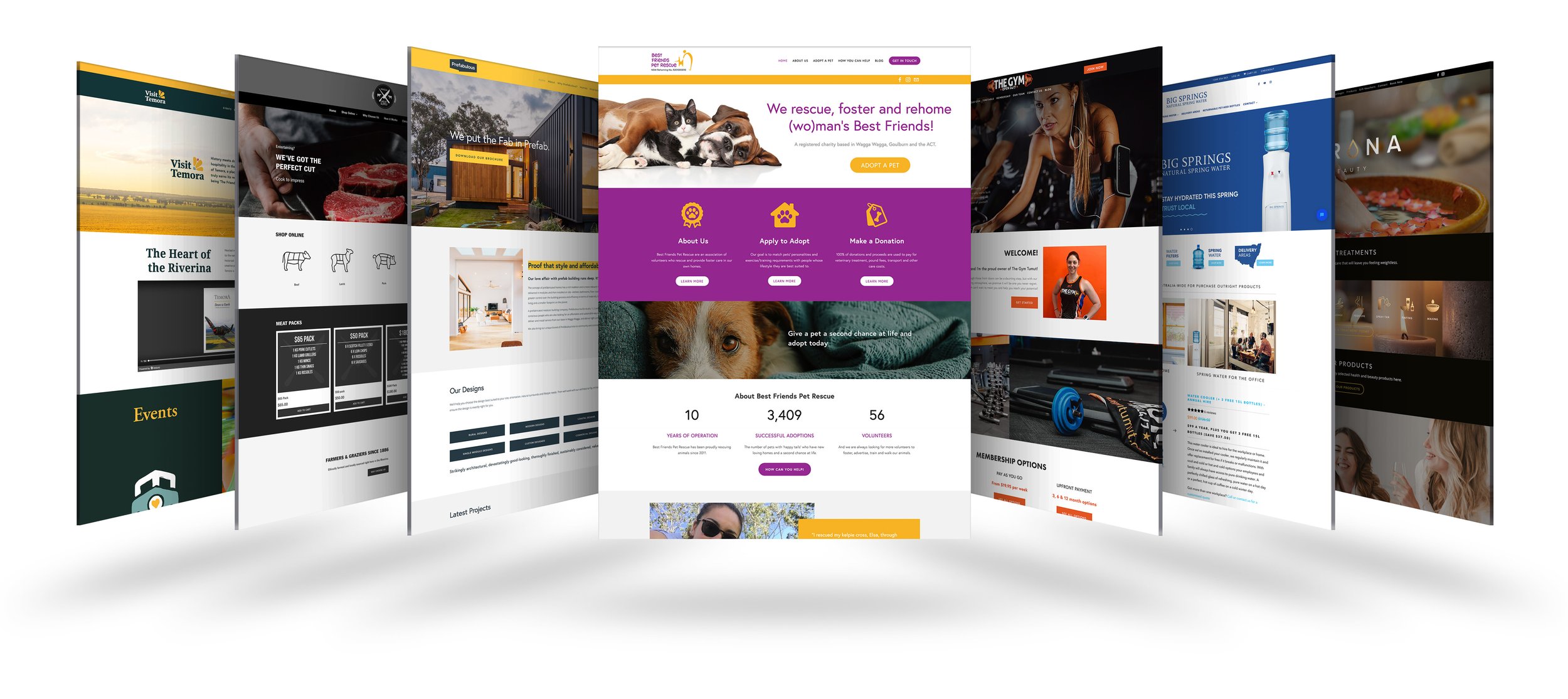Responsive Website Design for Effortless Viewing on Any Device
Responsive Website Design for Effortless Viewing on Any Device
Blog Article
Top Tips for Creating an Impactful Internet Site Style That Transforms
In today's electronic landscape, the importance of an impactful web site layout can not be overstated, particularly when it involves transforming visitors into customers. To attain this, one must take into consideration a range of elements, consisting of comprehending the target market, focusing on user experience, and maximizing for mobile systems. In addition, the tactical use compelling call-to-actions and a well-defined aesthetic power structure plays a vital function in guiding users with their trip. As we explore these necessary aspects, it becomes evident that the success of your website depends upon even more than just aesthetic appeal; it needs a thoughtful technique to layout and functionality.

Understand Your Target Audience
Recognizing your target audience is basic to effective internet site layout, as it lays the foundation for creating an engaging customer experience. Determining that your customers are, including their demographics, preferences, and behaviors, enables designers to tailor the website's material, design, and capability to satisfy details requirements.
Performing comprehensive marketing research is critical in this procedure. Studies, meetings, and analytics can offer useful insights into customer expectations and discomfort points. By compiling this information, developers can produce customer characters that represent various sections of the target market, ensuring that design decisions are notified and relevant.
Moreover, recognizing the target market assists in choosing ideal style components such as color pattern, typography, and imagery that resonate with customers. A website that talks directly to its target market cultivates a feeling of link and count on, encouraging longer visits and higher conversion prices.
Ultimately, a user-centered approach to site design not just improves user satisfaction yet also supports organization goals by driving interaction and commitment. By focusing on the needs and preferences of the target audience, a web site can successfully serve its purpose and attain preferred outcomes.
Prioritize User Experience
To boost the overall efficiency of a website, prioritizing individual experience (UX) is important (Website Design). A properly designed UX makes sure that site visitors can navigate the website easily, discover information quickly, and involve with content meaningfully. This leads to increased user satisfaction and greater conversion prices
Begin by applying user-friendly navigation. Menus ought to be logically structured, enabling customers to situate essential areas of the website with very little effort. Consistency in layout aspects, such as color pattern and fonts, cultivates experience, which is important for keeping individual interaction.
Additionally, take into consideration the packing speed of your website. A delay of just a few seconds can lead to considerable drop-offs, as customers are less likely to wait on a slow-loading page. Enhancing pictures and maximizing code can improve efficiency and keep visitors.
In addition, clearness in material presentation is essential. Use concise, appealing language and separate text with visuals to improve readability. By focusing on customer experience, you not only create an extra delightful atmosphere for visitors but also enhance your brand's integrity. Ultimately, an emphasis on UX is a financial investment in the long-lasting success of your web site.
Enhance for Mobile Gadgets
Maximizing for mobile gadgets is important in today's electronic landscape, where an enhancing number of individuals gain access to web sites with mobile phones and tablets. A mobile-friendly layout not just improves user experience yet likewise plays a considerable duty in enhancing search engine positions. hop over to these guys To achieve this, it is vital to adopt a receptive design that immediately adapts to various display dimensions and orientations.

Filling speed is an additional vital element; mobile individuals are typically less patient and expect fast access to info. By focusing on mobile optimization, you ensure that your internet site remains competitive and efficiently involves a broader target market.
Use Compelling Call-to-Actions
A web site's efficiency often depends upon its capacity to assist visitors towards preferred activities, making engaging call-to-actions (CTAs) vital elements of style. CTAs offer as the critical points that direct individuals to involve with the site, whether that means purchasing, enrolling in an e-newsletter, or downloading and install a source.
To develop efficient CTAs, clearness is vital. Use succinct language that plainly interacts the action you desire the customer to take.
Furthermore, the layout of CTAs need to attract attention without being noticeable. Utilize contrasting colors and clear fonts to guarantee they capture interest. Furthermore, consider utilizing directional signs, such as arrows or photos, to assist users toward these buttons. By concentrating on these aspects, companies can significantly improve customer engagement, driving conversions and inevitably accomplishing their Recommended Reading site's goals.
Concentrate On Visual Pecking Order
Effective web site design counts greatly on a well-structured visual power structure that guides individuals with material seamlessly. By arranging elements in a fashion that focuses on info, developers can enhance customer experience and facilitate decision-making. This entails making use of size, shade, contrast, and spacing purposefully to accentuate the most vital elements of a page.
The usage of larger fonts for headings and subheadings develops a clear distinction in between various sections, enabling individuals to scan content easily. In addition, employing different shades for switches and calls-to-action can capture customer focus and urge communication. Whitespace is another crucial element; it avoids mess and makes it possible for individuals to focus on key messages without distractions.
Images and graphics should complement the message while also sticking to the established power structure, strengthening the overall message (Website Design). Consistency in layout aspects, such as color design and typography, more strengthens the aesthetic pecking order, making navigation user-friendly

Conclusion
In conclusion, effective internet site design necessitates a detailed understanding of the target audience, prioritization of customer experience, and mobile optimization. Ultimately, a well-executed web site layout serves as a vital part in driving individual activities and accomplishing business objectives.
Report this page